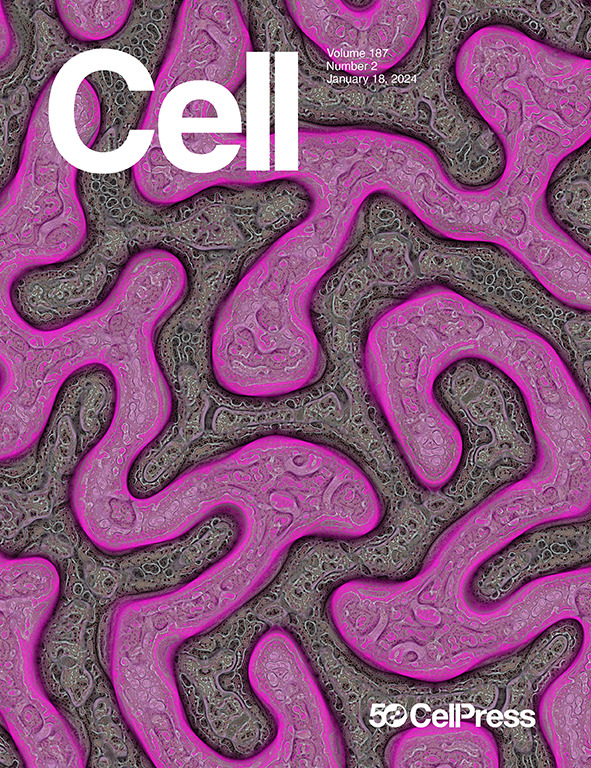造血中细胞状态特异性增强剂的设计原则
IF 45.5
1区 生物学
Q1 BIOCHEMISTRY & MOLECULAR BIOLOGY
引用次数: 0
摘要
在细胞分化过程中,增强子将转录因子(tf)的重叠梯度转化为高度特异性的基因表达模式。然而,调控DNA的巨大复杂性阻碍了对潜在顺式调控规则的识别。在这里,我们对64,400个完全合成的DNA序列进行了表征,以自下而上地剖析血液干细胞向七种髓系分化背景下细胞状态特异性增强子的设计原则。重点关注38个TF的结合位点及其成对相互作用,我们发现相同的位点显示抑制和激活功能,这是细胞状态、位点组合或仅仅预测TF在增强子上的占用的结果。令人惊讶的是,激活位点的组合经常相互中和或获得抑制功能。这些负协同作用将TF表达的数量失衡转化为二元活性模式。我们利用这一原理,从零开始自动创建具有用户定义的造血祖细胞状态组合特异性的增强子。本文章由计算机程序翻译,如有差异,请以英文原文为准。

Design principles of cell-state-specific enhancers in hematopoiesis
During cellular differentiation, enhancers transform overlapping gradients of transcription factors (TFs) to highly specific gene expression patterns. However, the vast complexity of regulatory DNA impedes the identification of the underlying cis-regulatory rules. Here, we characterized 64,400 fully synthetic DNA sequences to bottom-up dissect design principles of cell-state-specific enhancers in the context of the differentiation of blood stem cells to seven myeloid lineages. Focusing on binding sites for 38 TFs and their pairwise interactions, we found that identical sites displayed both repressive and activating function as a consequence of cell state, site combinatorics, or simply predicted occupancy of a TF on an enhancer. Surprisingly, combinations of activating sites frequently neutralized one another or gained repressive function. These negative synergies convert quantitative imbalances in TF expression into binary activity patterns. We exploit this principle to automatically create enhancers with specificity to user-defined combinations of hematopoietic progenitor cell states from scratch.
求助全文
通过发布文献求助,成功后即可免费获取论文全文。
去求助
来源期刊

Cell
生物-生化与分子生物学
CiteScore
110.00
自引率
0.80%
发文量
396
审稿时长
2 months
期刊介绍:
Cells is an international, peer-reviewed, open access journal that focuses on cell biology, molecular biology, and biophysics. It is affiliated with several societies, including the Spanish Society for Biochemistry and Molecular Biology (SEBBM), Nordic Autophagy Society (NAS), Spanish Society of Hematology and Hemotherapy (SEHH), and Society for Regenerative Medicine (Russian Federation) (RPO).
The journal publishes research findings of significant importance in various areas of experimental biology, such as cell biology, molecular biology, neuroscience, immunology, virology, microbiology, cancer, human genetics, systems biology, signaling, and disease mechanisms and therapeutics. The primary criterion for considering papers is whether the results contribute to significant conceptual advances or raise thought-provoking questions and hypotheses related to interesting and important biological inquiries.
In addition to primary research articles presented in four formats, Cells also features review and opinion articles in its "leading edge" section, discussing recent research advancements and topics of interest to its wide readership.
 求助内容:
求助内容: 应助结果提醒方式:
应助结果提醒方式:


